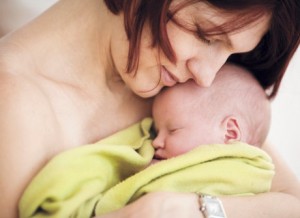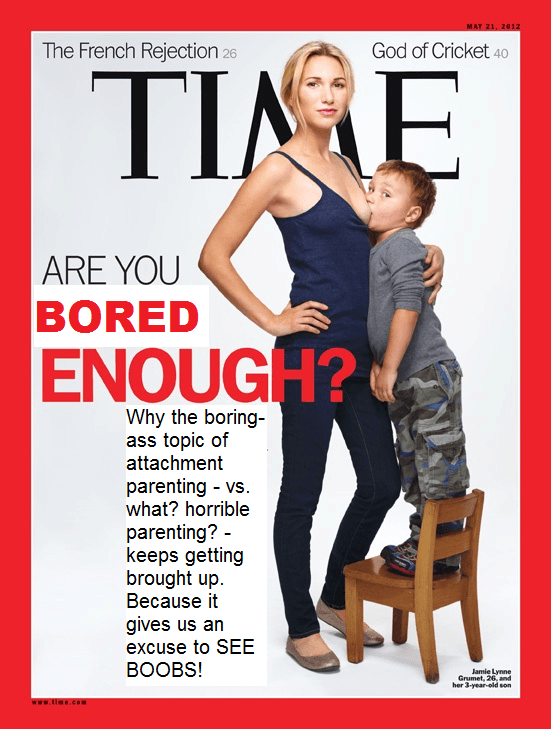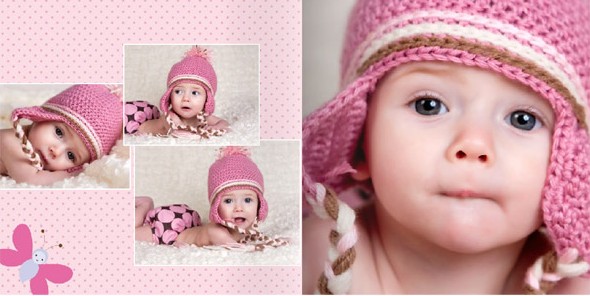 You envisioned a sweet, soft, adorable baby — round and rosy with beautiful skin and a tiny button nose. So what are these spots and splotches? These swollen eyelids and hairy shoulders? These runny, yellow diapers and horrible cries? Your baby is a work of beauty in progress… Just wait, he’ll soon become the perfect angel you imagined! Here are some common situations that often worry first-time parents… but are completely normal and will soon pass!
You envisioned a sweet, soft, adorable baby — round and rosy with beautiful skin and a tiny button nose. So what are these spots and splotches? These swollen eyelids and hairy shoulders? These runny, yellow diapers and horrible cries? Your baby is a work of beauty in progress… Just wait, he’ll soon become the perfect angel you imagined! Here are some common situations that often worry first-time parents… but are completely normal and will soon pass!
Puffy eyelids: This is caused by fluid she’s retaining to tide herself over until feeding is established. It’s just temporary and nothing to be concerned about.
Swollen breasts: This will also disappear on it’s own. This is caused by your hormones, which still linger in your baby’s system. You might even find a few drops of milk!
Swollen down there, too! Your baby boy’s huge testicles are actually a result of pressure exerted on your baby during birth, as well as by fluids trapped in tissue. Mom’s hormones, which are still circulating in their body, cause enlarged testicles in boys; in girls, they cause the labia to swell. This will subside over the first couple of days.
Flaky skin: In the womb, baby’s skin was protected by a coating of white, waxy material called vernix. After birth and exposure to air, the vernix is rubbed away, the upper layer of his skin dries out and begins to peel. Your baby’s entire body may peel (although it’s most noticeable on the hands and feet). The flaking usually lasts one to two weeks, and there’s no need to break out the moisturizers or exfoliaters, either. It will go away on its own. Another condition, called Seborrheic dermatitis, or cradle cap, can also cause scaly, flaking skin on your baby’s eyebrows, behind her ears, and on her neck. Again, no treatment is necessary, it will clear up by itself.
Cone head: If your newborn’s head looks a little odd, that’s because he probably spent hours wedged in your pelvis. Openings in the skull allow it to mold its shape to fit through the birth canal, which protects against fractures or brain injury during a vaginal delivery.
Hairy little beast! Some infants have fine hair, called lanugo, covering their bodies. Not to worry, this will fall off within the first few weeks.
Splish Splash: Babies skincare is simple. Rinsing baby with warm water and, at most, a mild baby soap, is all that’s needed. Baby cremes, powders, and moisturizers are usually not necessary, unless baby’s skin seems dry.
Diaper Doody: At birth, your newborn will excrete meconium, a dark and sticky substance that looks weird but is totally normal. After the first week, her poop will change in color and consistency. If you are breastfeeding, it will be yellow, seedy, and runny. Formula-fed babies have stools that are tan-colored and soft.
Diaper Rash: A universal condition, is best prevented by changing diapers regularly, and espeically promptly if baby is dirty. Diaper rash creams (for example: Desitin, Balmex, A&D, Aveeno, Baby Aquaphor, Triple Paste, and creams from Huggies and Gerber) can cure most rashes. More info on other types of rashes by clicking here.
Blood or discharge in the diaper: Maternal hormones again! Don’t worry if you see a small smudge of blood or bit of staining on your baby girl’s diaper in the first weeks of life. clear or whitish discharge is also normal at first. Bright red blood, however, is unusual and warrants medical attention.
Cold Feet: If your baby’s hands and feet look chilly, pale, and purple, don’t just assume she’s cold. Baby’s circulatory system is still developing, and his hands and feet are the last body parts to get a good blood supply. A good rule of thumb is to keep a newborn wrapped in one extra layer than you would be comfortable in.
Umbilical cord: After birth, the umbilical cord is cut and clamped. The remaining stump dries up, looks black and ugly, and falls off usually between 1 and 3 weeks. Baby should be sponge-bathed until it falls off, and the stump should kept clean and dry. Some doctors will tell you to clean it with alcohol, while others think this is unecessary and only causes the umbilical cord to stay attached longer.
Baby acne: This unexpected skin spoiler typically erupts in the first few days to weeks of life, and is a result of mother’s estrogen which is still circulating in the baby’s body. Another skin condition called milia, tiny white pimples on the face, is caused by blocked oil glands. Baby acne and milia will disapear on their own after a few weeks. Erythema toxicum, small white or yellowish bumps surrounded by red, blotchy skin, is usually seen in babies under 10 days old, and generally lasts only 3-5 days. No treatment is necessary.
Blister on lip: Vigorous sucking on a bottle or breast may cause a nursing tubercle or blister, which doesn’t bother baby and may actually make grasping the nipple easier. The callus will disappear on its own.
Oral rash: If you find small, white bumps on the roof of baby’s mouth, don’t stress — they’re harmless cysts, known as Epstein’s pearls, that will disappear as your baby gets older. However, if you spot big, blotchy white areas in your child’s mouth or tongue, this could be thrush, and you should see a doctor for treatment.
Seeing red: You may see small, red hemorrhages on the whites of the eyes from tiny blood vessels rupturing during delivery. These red marks normally disappear within a few days. And don’t worry if baby sometimes looks cross-eyed, or if his eyes occasionally wander: Newborns may not always focus their eyes together.
Hello yellow! Jaundice, which causes yellowing of the skin, occurs in 60 percent of healthy newborns. It comes from bilirubin, a pigment made by red blood cells a newborn’s immature liver can’t effectively clear away. Jaundice typically peaks between 3 and 5 days after birth and resolves by 1 week of age. You should consult a doctor to find out if any treatment is necessary.
Breathing funny! It may seem alarming, but it is actually normal for infants to take slight pauses (up to 20 seconds) and then go through periods of rapid breathing. This is part of the development of the diaphragm (the muscle that enables breathing) and neurological system. By about 6 weeks old, your baby should develop a more regular pattern of breathing.
Toes turn in: Sometimes, a newborn’s feet turn inward. This is due to the pressure of being curled up in utero. It should self-correct within a few months.
Spit up everywhere! A little dribble is one thing, but projectile spit-up that covers everything in sight is quite another. But as long as baby seems happy and is gaining weight normally, there is nothing to worry about (except clean-up!).
Losing it! Babies typically lose about 10 percent of their body weight by day 3of life. (Breast-fed babies may lose a little more than bottle-fed ones because breast milk doesn’t usually come in until the third day postpartum.) This is because babies are sleepy from the trauma of birth, and they’d rather sleep than eat. In addition, they’re also shedding some of the fluids they were born with, which can lighten their load. But don’t panic, babies enter the world with enough fluid to get them through the first 3-5 days, whether they feed or not. By a week, they’ll have started gaining weight again.
Visit Parents.com for more Newborn 101!
Photo from crmcwy.org




